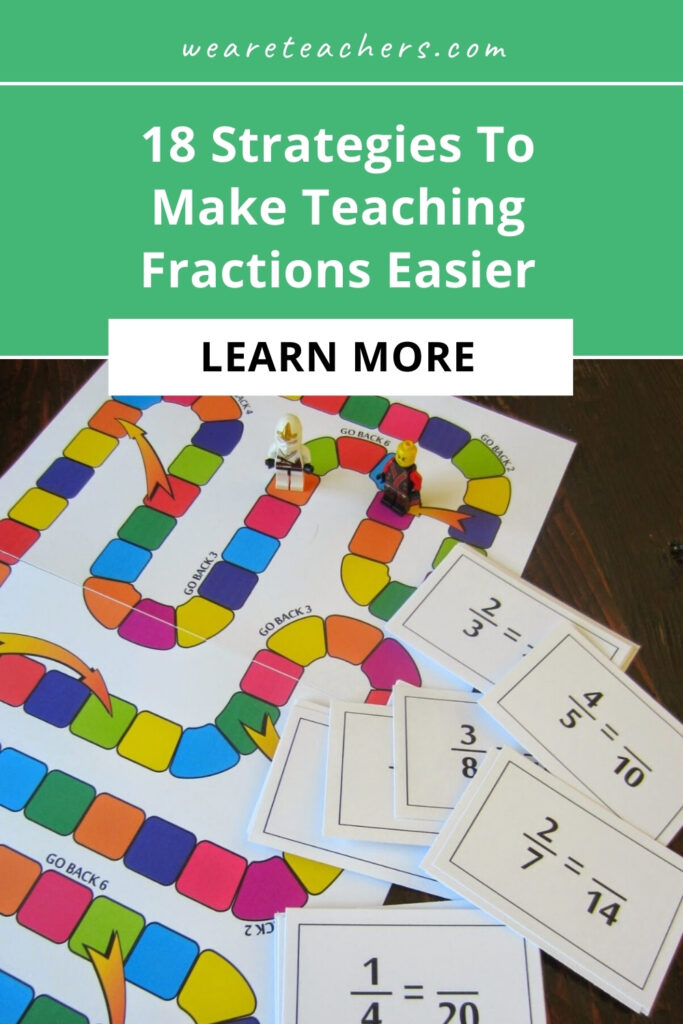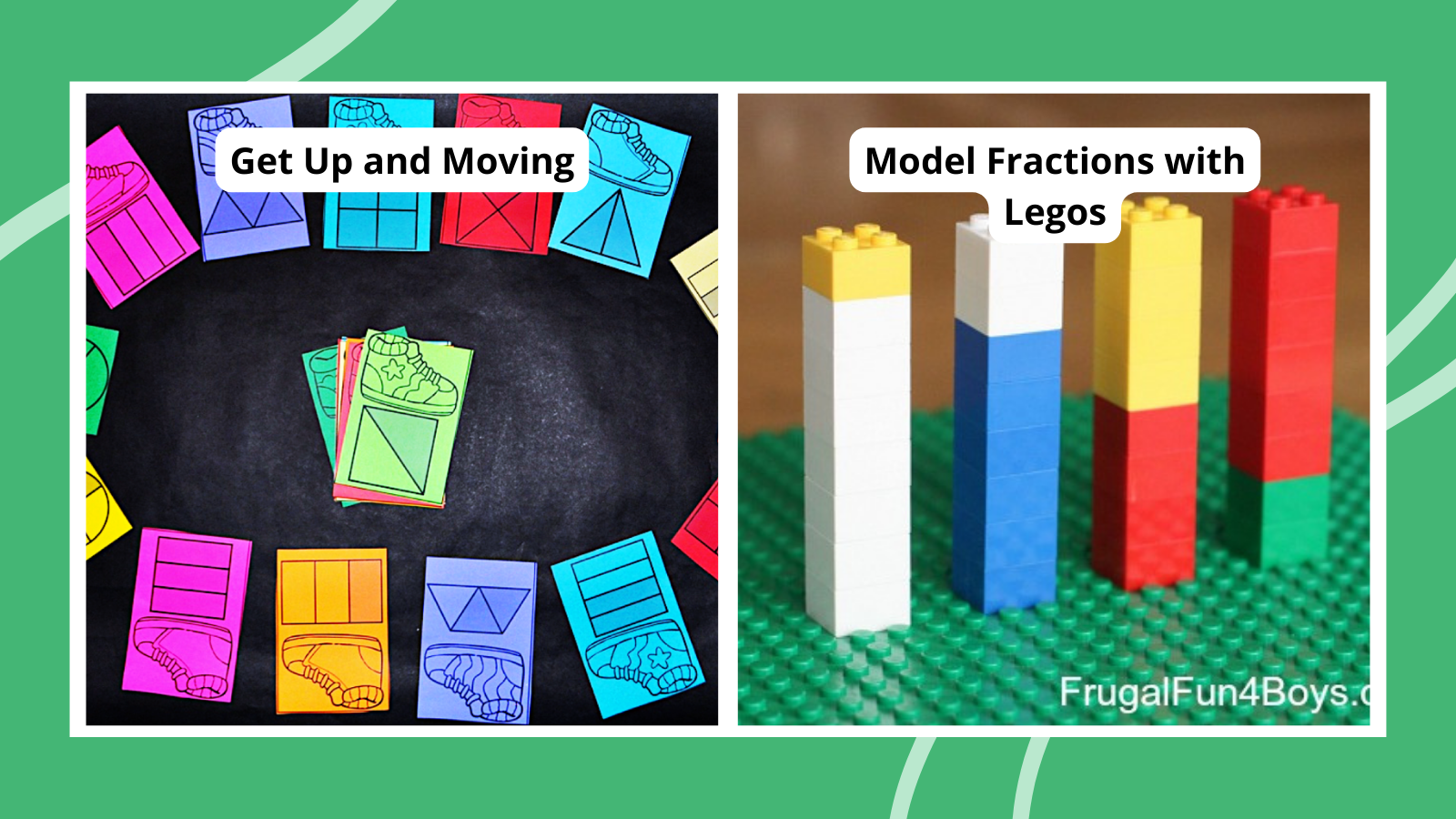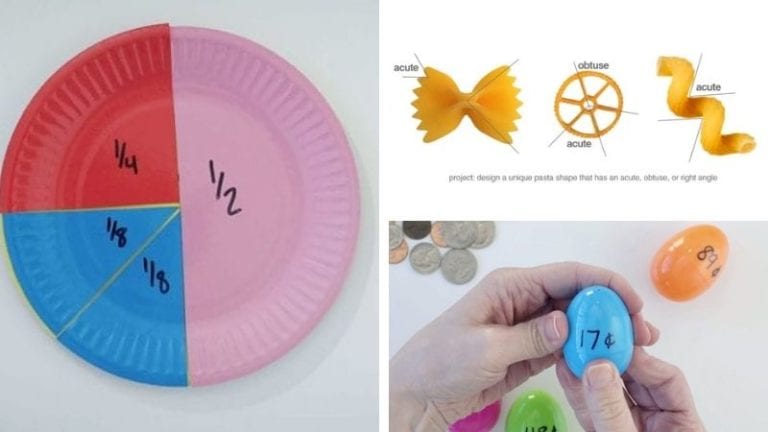Every year, I hear the same chorus in the hallways: “My kids just aren’t getting it! Teaching fractions is so hard!” While fractions are traditionally taught in elementary and middle school, I’ve even heard from some high school teachers who say their students struggle to understand them.
In fact, leading mathematicians like Dr. Tom Dick, one of the authors for the Texas Instruments Building Concepts program, have said that a solid understanding of fractions is one of the foundations on which high school math success is built.
Teaching fractions is an essential part of math curriculum. But why are fractions so hard for kids to understand? The three things that trip kids up the most are:
- We are often asking kids to perform a series of steps without understanding the reasons behind the steps. Sometimes, when they’re younger, students are not even developmentally ready to understand the concepts.
- Kids often develop misconceptions about all challenging topics in mathematics, including fractions. When we can help kids confront those misconceptions, learning often occurs more easily.
- Kids struggle with fractions for the same reason that kids struggle with a lot of new concepts: They just need practice.
Strategies To Make Teaching Fractions Easier
1. Use visual representations

The concept of a “fraction” is abstract, and visualizing part vs. whole is a developmental skill not fully in place for some kids until middle or high school. Manipulatives can help the concepts become more concrete. Build fractions using different visuals, either circles or tiles, to reinforce what fractions look like.
Building fractions together gives kids a visual concept on which they can build the rest of their knowledge. We use the kits throughout our entire fraction unit. I’ll keep my fraction kit taped to the board throughout my unit and refer to it when we need to work out a problem together.
Buy it: Fraction tiles and circles kit at Amazon
2. Use grid-based visuals
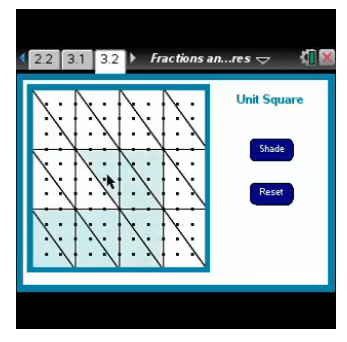
Anytime I can provide an image to go with the concept I’m teaching, I know I’m going to be in better shape. One way I do this when teaching fractions is to ask students to create the visual on paper. This activity from Texas Instruments teaches students how they can represent fractions in a more visual way.
With a grid-based system, the teacher uses a projector or interactive whiteboard to introduce a lesson that presents fractions (as well as fraction-based computations for more advanced students) as shapes. After the kids have seen the visual representation on the screen, they can make their own fraction pictures on the free printables that go with the activities.
3. Play board games
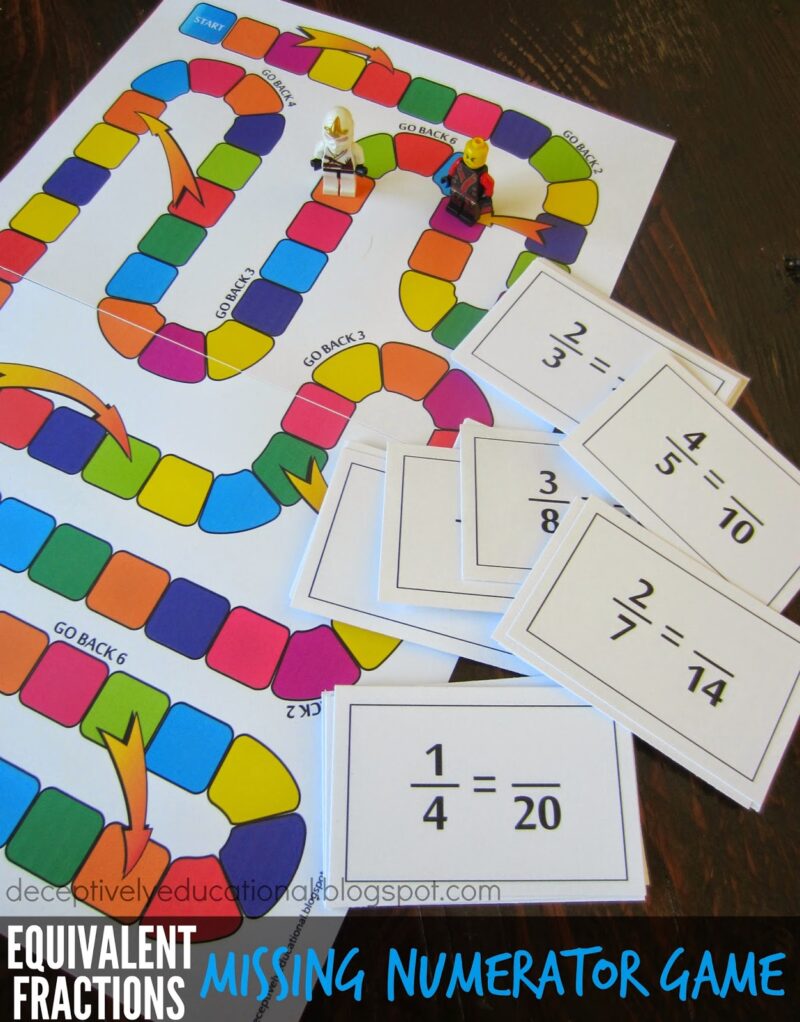
Games serve more than one purpose. First, they make what could be a dry and boring topic to your students more fun and interesting. They also often provide that visual component that is especially helpful for some students. Here are a couple of my favorites:
Missing Numerator Game
For this game, the student needs to determine the missing numerator to determine how many spaces to move forward. Sometimes kids just need practice to build fluency with a particular skill. Games like this can make the required practice a little less painful.
Get tutorial: Missing Numerator Game
Domino Fraction Games
There are two fun games on the Upper Elementary Snapshots website. Both of them involve drawing dominoes but using the two opposing sides of the dominoes as fractions. The possibilities here are endless: Compare fractions, add fractions, match fractions. Pick your favorite and dive in with your kids.
Get tutorial: Domino Fraction Game
4. Turn to tech
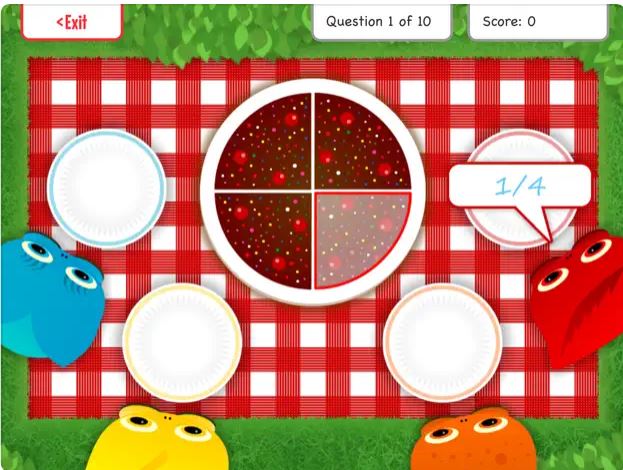
Another strategy I like to use to help kids build fluency with their fractions skills is to let them practice digitally. Apps and other online resources can help solidify concepts. Two apps that my students particularly enjoy are Squeebles Fractions and Fractions. Smart Pirates.
Both apps present fractions visually and include fun games that ask students to be more flexible in their thinking about fractions, often helping correct misconceptions kids may have in place. For example, one activity from Squeebles Fractions helps students understand that serving ⅓ of a cake may still require two pieces, not just one.
Check out this giant list of teaching and learning apps.
5. Give step-by-step strategic instruction
When you’re introducing a new concept, free exploration with manipulatives and games can help students become ready to learn. But I’ve learned that when it comes time to teach a particularly challenging concept, it’s always helpful for me to map out my goals and objectives.
Step-by-step, strategic instruction can address all three of the larger issues listed above that students face when they’re struggling to learn fractions: limited understanding, misconceptions, and lack of practice. If you feel like your math curriculum isn’t offering enough guidance, I love the free resources available through the TI Building Concepts program, which provide the kind of structure that helps guide students through what can be a tricky concept.
6. Model fractions with food

One of the best ways I found to introduce and reinforce fractions with my students was to use food. Things such as pie, pizza, and Halloween candy relate particularly well for real-world context and visualization. Even in 7th grade, dealing with multiplying and dividing fractions, I would always come back to my pizza example. The prompt that would always connect the best with ravenous middle schoolers was when I drew a pizza on the board and started dividing it into smaller and smaller fractions. I would ask while pointing to the ½ slice and the ⅛ slice, “Do you want this slice, or this slice?” When they could clearly see that the ⅛ slice was much smaller than the ½, the abstract concept of “part of a whole” became much more concrete (and tasty).
7. Get up and moving

Teachers can introduce fractions in all kinds of creative ways, but if students are antsy and wiggly, they won’t retain much of what’s been taught. Getting wiggles out, particularly for younger students, is important. This up-and-moving fractions game, similar to a traditional game of Musical Chairs, accomplishes two vital things (among others): getting kids up and moving, and having them associate a fraction that they see with one that they also have to write. Visuals are incredibly helpful when teaching fractions, and visuals that students can literally move to and interact with are even better.
Get tutorial: Up-and-moving fractions game
8. Transform fractions through gamification
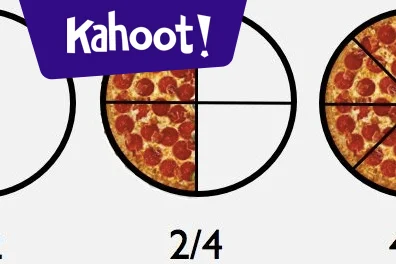
Online games, like Kahoot!, Blooket, and Quizlet, are an engaging strategy for introducing a new topic, reinforcing concepts throughout our unit, or preparing for a test. These gamified learning resources saved me time and time again during distance learning as one of the very limited ways I was able to engage students through a screen. Simply search for whatever fraction concept you’re currently working with, and I guarantee you there will be a plethora of choices to use with your students. (Quizizz and Gimkit are also great gamified resources.)
9. Color by fraction

All students love to color every once in a while—yes, even middle schoolers. Using the tried-and-true “color-by-number” method is actually fantastic for students to practice their fraction skills because it uses yet another way of interacting with fractions in a concrete way.
Check out the color-by-fractions pages at Kaylee’s Education Studio. They’re a great option for math centers/rotations, early morning work or for early finishers, and as a Friday fun activity. You can even find ones that have a digital component!
10. Play music
When I was growing up, every school had the option to join band, orchestra, and choir. I played the clarinet from 4th grade through high school. I quickly learned that math and music are deeply intertwined, and I still believe that learning to read music helped me learn more complex mathematical concepts. Though sadly, these types of classes are becoming less and less common, you can sneak in a basic reading music lesson to help teach your students about fractions. For example, a whole note is held for four counts, whereas a half note is held for—you guessed it—two counts. There are quarter notes, eighth notes, and even sixteenth notes.
11. Pool noodle fractions
I love teaching fractions with manipulatives that get kids up and moving around. Pool noodle fraction tools are just that. They’re great for students to work with to represent and work with fractions, and they’re big enough for students to use in groups and for tactile learners who want to move around—have students work on the floor to compare fractions by building with pool noodles.
Buy it: Pool noodles at Amazon
12. Fraction trays

Manipulatives to represent amounts are so important when teaching fractions. I love how this teacher uses trays to help students keep their manipulatives organized. Combine trays with sticky notes with different fractions to represent so students can practice modeling fractions.
Get tutorial: Fractions trays
13. Build fractions with bricks

I mean, who doesn’t love to work with LEGO? Bring LEGO or other building bricks into a fractions lesson and you’ll see how awesome they are for creating and working with fractions. I provide students with blocks and different equivalent fractions to build so they can visualize how different fractions look even if they all make the same amount.
Get tutorial: LEGO fraction activities
14. Work with dominoes

Each domino is basically its own fraction. Have students work with dominoes and whiteboards to create fraction addition, subtraction, multiplication, or division problems. Or have students translate improper domino fractions into proper fractions.
Get tutorial: Domino fractions
15. Reinforce that fractions are not all the same

An important thing for students to know about fractions is that two fractions are not the same amount. Like, two halves might not be the same, it depends on the size of the whole. Reinforce this by using plastic lids and caps to model different fractions and show students how fractions relate to quantity.
Get tutorial: Fraction lids and caps activity
16. Create a fraction model using straws and string
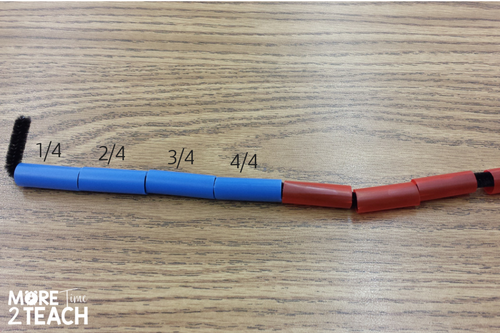
I love a manipulative that students can use at their desks. This fraction straw model fits the bill. Students build a fraction manipulative using bits of straw cut into fraction lengths (the entire straw is one whole) and string. Or use a pipe cleaner for a firmer manipulative. Students can manipulate their straw fraction model as they work through problems.
Get tutorial: Fraction straw model
17. Use measuring cups and spoons
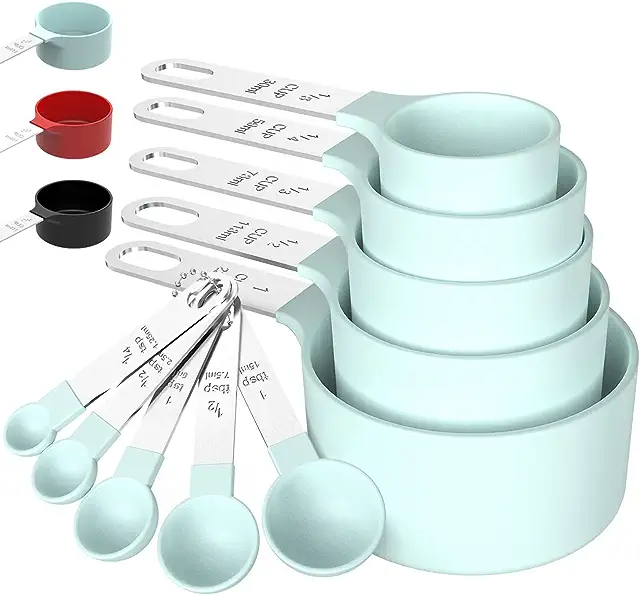
Measuring spoons and cups are a great way to show students how amounts divide into each other. Have them combine two halves to make a whole, or separate one-half into two-fourths. For younger students, set up a sensory bin with spoons or cups and rice or beans. When teaching fractions to older students, use cups and spoons as manipulatives in math problems.
Buy it: Measuring Cups and Spoons Set at Amazon
18. Use a visual model that students can do again and again

An efficient way for students to work through lots of practice problems is to slip a visual model into a plastic sheath. Students can use a whiteboard marker to work through each problem, with lots of opportunity to erase and start again until they master the skill.
Get tutorial: Visual strategies for dividing fractions
Buy it: Dry-Erase Pockets at Amazon
Looking for even more fun and engaging ideas for teaching fractions? Check out Fun Fraction Games and Activities for Kids.
Plus, grab this free Pizza Fractions poster set.
